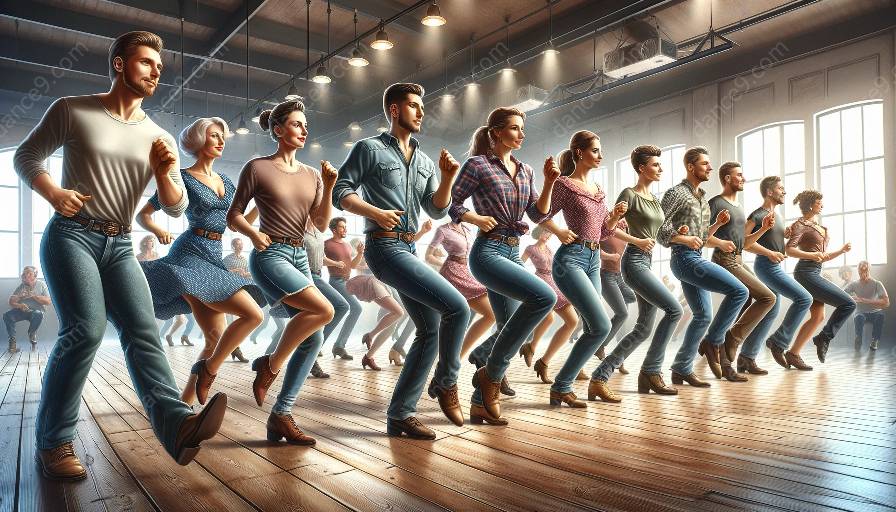Line dancing is a popular dance form that has deep cultural roots and influences. This dance style has evolved over the years, drawing from various cultural traditions and music genres to become a significant part of social gatherings and dance classes.
Origins and Cultural Significance
The origins of line dancing can be traced back to folk dance traditions in various cultures, including European, Native American, and African dance forms. These cultural influences shaped the movements and steps in line dancing, reflecting the diverse heritage of the dance.
Furthermore, line dancing has been influenced by country and western culture, particularly in the United States. The dance style gained popularity in cowboy culture and was often performed to country music, reflecting the influence of this musical genre on the development of line dancing.
Music and Traditions
Music plays a crucial role in line dancing, and the cultural influences in the choice of songs and musical styles are significant. In the early days, line dancing was accompanied by folk songs that were deeply ingrained in the cultural heritage of the communities where the dance originated.
As line dancing evolved and gained popularity, it embraced a variety of musical genres, including country, pop, and even contemporary hits. These diverse musical influences reflect the adaptability and inclusive nature of line dancing, allowing it to resonate with people from different cultural backgrounds.
Traditions associated with line dancing also vary across different cultures. For example, in some communities, line dancing is an integral part of social gatherings and celebrations, symbolizing unity and harmony. In contrast, in other cultures, line dancing may be performed as a form of storytelling or expression of cultural identity.
Social Aspects and Community
Line dancing has strong social and community-oriented aspects that are deeply influenced by cultural norms and values. In many cultures, line dancing serves as a means of social interaction, bringing people together to share in the joy of movement and music.
Moreover, line dancing often fosters a sense of community and belonging, providing individuals with a platform to express their cultural heritage through dance. This inclusive nature of line dancing has made it a popular choice for dance classes, where people from diverse cultural backgrounds come together to learn and enjoy this vibrant dance form.
Joining Dance Classes and Engaging with Line Dancing
Participating in dance classes offers a unique opportunity to immerse oneself in the cultural influences of line dancing. Through interactive and engaging sessions, individuals can learn about the historical and cultural significance of this dance form while mastering the steps and movements that embody its rich heritage.
By joining dance classes, individuals can also experience the inclusivity and diversity of line dancing firsthand, as they interact with peers from different cultural backgrounds who share a passion for this dance style.
Conclusion
Line dancing is a cultural treasure that reflects a tapestry of influences, traditions, and music. It transcends cultural boundaries, bringing people together through the joy of movement and rhythm. Engaging with line dancing through dance classes provides an enriching experience that allows individuals to explore the cultural influences that have shaped this dynamic and vibrant dance form.













































































